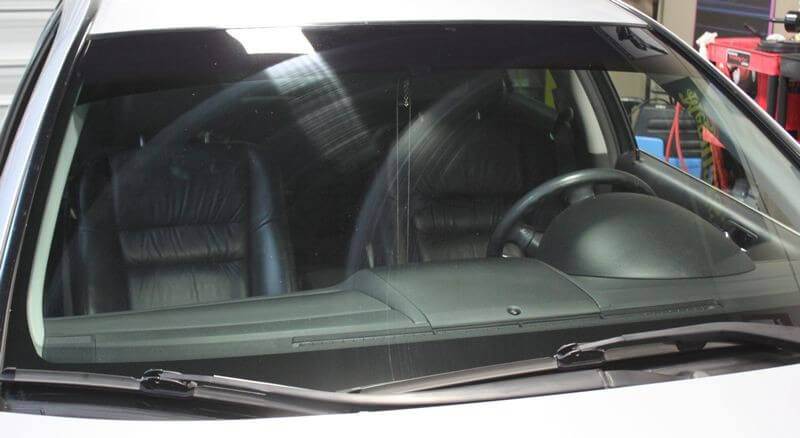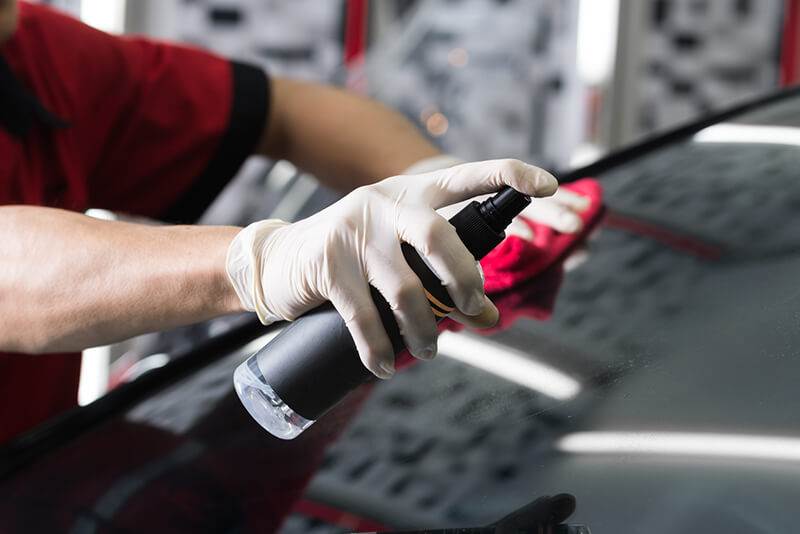When it comes to removing scratches from your car’s windshield, you can only do so much before ruining the whole thing altogether. You see, it’s almost impossible to get rid of deep scratches on glass. If the scratches in your windshield are more than 50 microns deep, you have two choices: suck it up and live with it or spend enormous money in replacing the entire windshield.
How Will I Know If The Windshield Scratches Are Too Deep To Fix?

Easy. Try to feel the scratches using your fingernail. Run your nail over the scratch and try to see if your nail is catching the scratch. If it does, it means the scratch is deeper than 50 microns. As previously stated, there is little you can do at this point. Even if you bring your car to a professional, most will refuse to repair glass for fear of ruining the entire windshield. We’ve seen it before, and it’s not a pretty sight. Ultimately, the final remedy is to buy a new windshield.
However, if you can’t feel the scratch with your nail, then don’t despair. With a few simple steps, you can remove those fine scratches and clean your entire windshield at the same time. It’s like hitting two birds with one stone!
But similar to cleaning or detailing the paint, you’ll need to employ the proper steps or procedures in pre-cleaning the glass prior to removing the scratches. We’ll focus more on the pre-cleaning step since it’s the most important factor to help reduce further marring or scratching the glass as you work.
How To Clean The Windshield And Remove Scratches
Materials Needed:
- Glass cleaner
- Microfiber towels
- Glass polishing compound
- Glass polishing pad
- Orbital or rotary buffer
- Clay bar
- Plastic razor scraper or scraping knife
Step 1: The first step is to clean the entire vehicle. This reduces the possibility of inducing more scratches caused by standing dust, dirt, and particles. Clean the entire vehicle using car shampoo and water. After washing, rinse and dry the vehicle thoroughly.
Step 2: After cleaning the windshield, it’s time for the detailing part. Spray ample amounts of glass cleaner over the windshield. When cleaning or polishing glass, it’s important to always work with a well-lubricated surface. For this purpose, the glass cleaner is used primarily as lubrication when scraping and claying the glass.
Once the windshield is well-lubricated with glass cleaner, grab the plastic blade or scraping knife and run it from top to bottom, making sure to work in smaller sections as you scrape the windshield. This helps remove deep-seated gunk and grime. Wipe the windshield with a microfiber towel when done.

Step 3:After scraping the windshield, it’s time for the clay. Again, spray glass cleaner until the surface is damp. Grab a small piece of clay, flatten it like a small burger patty, and begin to wipe the clay repeatedly over the glass. Clay removes embedded particles on the glass, while the glass cleaner prevents further marring as you do so. You’ll be surprised at the amount of junk you’ll remove using this process, most especially if you’ve never used clay on the windshield before.
After claying, spray more glass cleaner on the windshield and wipe dry using a microfiber towel.

Via Amazon.com
Step 4: After scraping and claying the glass, the next step is removing fine scratches and imperfections in the windshield. Grab a polishing tool and a glass polishing pad. Apply a glass polishing compound on the pad and rub it lightly on the pad with your finger. This prevents the compound from slinging over the glass, which will inevitably leave a huge mess.
Next, place the pad over the windshield and polish the glass using moderate to high speed – preferably 1500 rpm or upwards. Avoid standing on a single area and always move the polisher around the windshield as you do this to prevent damage. Don’t hesitate to add more compound when the residue begins to dry.

Step 5:After polishing the glass, you can remove the haze using a glass cleaner and a microfiber towel. Lightly mist the towel with glass cleaner and wipe back and forth over the windshield to remove the residue. Turn the towel over and give it a second wipe.
Step 6:If you still see residue or streaks over the glass, give the surface a final wipe with a sprinkling of glass cleaner and a fresh towel. By now, the windshield will be squeaky clean.
Step 7:The final step is to apply a coat of Rain X on the windshield. You can use a similar product if you don’t like Rain X, but the idea is to seal the surface of the glass after scraping, claying, and polishing. Pour a small amount of Rain X on a clean sponge or applicator pad and wipe back and forth over the windshield using even coverage. Allow the product to set and dry to a haze for a couple of minutes before wiping the surface clean with a fresh microfiber towel.
Step 8:Don’t forget to clean the wiper blades! Raise the wipers up, grab a damp towel, and clean the wiper blades to remove gunk and debris, which are enough to re-scratch the windshield.
Will Toothpaste Work In Removing Windshield Scratches?
Yes, but only if you do it right. If you do it wrong, you’ll end up with more scratches than when you started. Again, proper lubrication is essential. Spray water over the windshield before applying the toothpaste with a thin applicator pad. Spray more water if the toothpaste begins to dry.
Remember that toothpaste is not a miracle product. It won’t erase scratches per se. It only fills the gaps between the scratch to make it less visible. We’re saying this to lower your expectations in using toothpaste to remove windshield scratches. In order to produce great results, you’ll need to follow the steps above.

